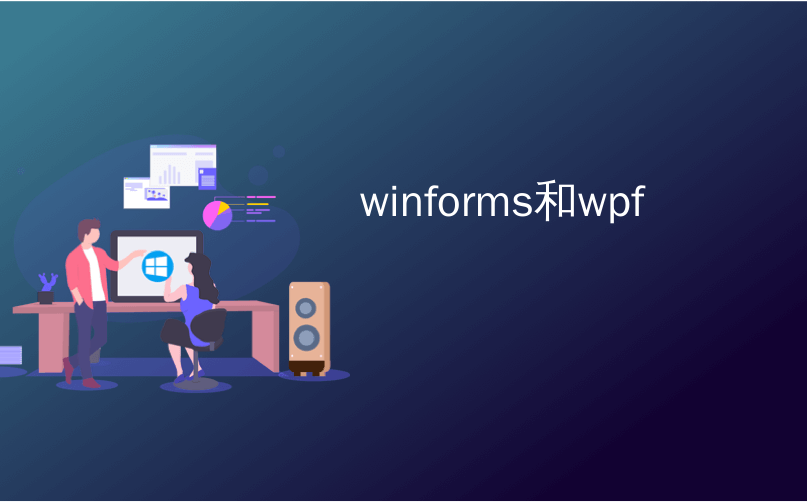
winforms和wpf
Even though my wife is Ndebele (Zulu) and we are trying to teach Z that particular Bantu Language, my first Linguistic African Love was Ethiopian Amharic. I almost majored in this stuff and I actually met my wife while I was speaking Amharic to one of her longtime college friends. Here's a small primer on Amharic I did in 2005 and there's a good basic Amharic Dictionary online here, that will exercise your fonts and mind as well. If you want to hear the languages, there's an Amharic audio dictionary here, or if you know me in person, I'll teach you some. Heck, if you know me, you know that'll be a long conversation because I love this stuff.
即使我的妻子是恩德贝勒(祖鲁语),并且我们正在尝试教Z特定的班图语,但我的第一个非洲语言之爱是埃塞俄比亚的阿姆哈拉语。 我几乎主修这门课,实际上是在我与妻子的一位长期大学朋友说阿姆哈拉语时遇到了我的妻子。 这是我在2005年做的Amharic的一个小型入门书,这里有一个不错的基本Amharic词典,它也可以锻炼您的字体和思维。 如果您想听这些语言,可以在这里找到一份Amharic音频词典,或者如果您是我本人的,我会教给您一些信息。 哎呀,如果你认识我,那会很漫长,因为我喜欢这个东西。
If you're running Windows Vista, you already have the Amharic Unicode Font "Nyala" and Input Method Editor installed! You can visit this test page to see that the Amharic support is quite complete on Vista. Here's my name in Amharic: ስካተ. If you aren't running Vista then you'll likely see black squares.
如果您正在运行Windows Vista,则已经安装了Amharic Unicode字体“ Nyala”和输入法编辑器! 您可以访问该测试页以查看Amharic支持在Vista上是否已经完全完成。 这是我在阿姆哈拉语中的名字:ስካተ。 如果您未运行Vista,则可能会看到黑色方块。

If you're running Vista, try this out. Go to the Control Panel and run the Regional and Language Options. Go to the Keyboards and Languages tab and click Change Keyboards. Don't worry, I won't break anything on your system, promise. Amharic is am-ET, by the way, compared to en-US or en-GB.
如果您运行的是Vista,请尝试一下。 转到“控制面板”并运行“区域和语言选项” 。 转到键盘和语言选项卡,然后单击更改键盘。 不用担心,我不会破坏您系统上的任何内容。 顺便说一下,与en-US或en-GB相比,Amharic是am-ET。

Click over to the Language Bar tab and make sure that Docked in the Taskbar or Floating on the Desktop is checked. You'll see your existing culture appear in the Language Bar - mine is in the tray.
单击“语言栏”选项卡,并确保已选中“停靠在任务栏”或“桌面浮动”。 您会在语言栏中看到您现有的文化-我的在托盘中。
Run Notepad, then go back to this menu and click Amharic.
运行记事本,然后返回此菜单并单击Amharic。
You can always remove this by going BACK to the Control Panel and just Removing the Amharic Language.
您始终可以通过返回到“控制面板”并仅删除阿姆哈拉语来删除它。
While you're in Notepad, you're going to type "Thank You" in Amharic, which is pronounced (roughly) "Amäsägnalähu." Amharic is an "abugida" አቡጊዳ (not quite a syllabary) kind of like Katakana in Japanese, and with most Input Method Editors for languages with a lot of characters that are entered with an English keyboard, there's a mapping. You type and English Transliteration, and the IME gives you possible characters.
在记事本中时,您将在Amharic中键入“谢谢”,其发音为(大约)“Amäsägnalähu”。 Amharic是日语中的片假名的“ abugida”አቡጊዳ(不是一个音节),在大多数输入法编辑器(用于带有许多字符的语言的输入法编辑器中)中都有英文键盘输入。 您键入和英文音译,然后IME给您可能的字符。

Amharic has no official transliteration, so this IME is kind of the standard, but there's always been arguments about the best way to describe the vowels. There are more vowels than in English, including a non-vowel-vowel.
阿姆哈拉语(Amharic)没有正式的音译功能,因此该IME是一种标准,但始终存在有关描述元音的最佳方法的争论。 元音比英语更多,包括非元音-元音。
Back to the point. In Notepad, type, using an English Keyboard:
回到重点。 在记事本中,使用英文键盘输入:
- a-downarrow-space (this is a special character, that I can't see how to type without the down-arrow) a-downarrow-space(这是一个特殊字符,没有下箭头,我看不到如何键入)
- m-e 我
- s-e SE
- g-' G-'
- n-a 呐
- l-e (the "e" is pronounced like "ay," by the way. le(顺便说一句,“ e”的发音类似于“ ay”。
- h-u-space 太空
You've just typed አመሰግናለሁ (ameseg'nalehu) which is one of the ways to say Thank You in Amharic. If you speak Japanese or another Asian languages you're likely used to using an IME like this. Notice how Notepad's support for Unicode means that it doesn't care about this new languages. It's just rolling with it.
您刚刚输入አመሰግናለሁ(ameseg'nalehu),这是在阿姆哈拉语中表达“谢谢”的一种方式。 如果您会说日语或其他亚洲语言,则可能已经习惯使用这样的IME。 请注意,记事本对Unicode的支持意味着它不关心这种新语言。 它随它滚动。
邪恶的黑色方块 (Evil Black Squares)

Be sure to know the details in Joel's classic Unicode post if you're doing international work and check out my Internationalization (i18n) Category. This "black square" issue is common when the system doesn't have a font available to render a Unicode code point, and since it's not legal to distribute that Ethiopian Nyala Vista Font outside the operating system by just copying it, how would an Ethiopian write and application and have it work on Windows XP. Surely a company in Ethiopia might want to defer upgrading to Vista (even though it includes all this great support for Amharic, including the custom IME (Input Method Editor)) for a while to save costs. This issue of course, applies to many languages beyond Amharic, and that's why I'm interested.
如果您正在从事国际工作,请务必了解Joel的经典Unicode帖子中的详细信息,并查看我的国际化(i18n)类别。 当系统没有可用的字体来呈现Unicode代码点时,这种“黑方块”问题很常见,并且由于仅通过复制该埃塞俄比亚Nyala Vista字体在操作系统之外进行分发是不合法的,埃塞俄比亚人怎么会编写和应用程序,使其在Windows XP上运行。 当然,埃塞俄比亚的一家公司可能希望推迟升级到Vista(即使它包括对Amharic的所有强大支持,包括自定义IME(输入法编辑器)),以节省成本。 这个问题当然适用于除阿姆哈拉语以外的许多语言,这就是我感兴趣的原因。

I've been bugging Michael Kaplan about this for as long as I've known him. It should be easier to create WinForms applications with cultures that don't include as much support as the Asian Languages. Plus, when a new OS like Vista comes out, how can we pass on the benefits to XP?
我认识迈克尔·卡普兰(Michael Kaplan)已有很久了。 使用不包含亚洲语言支持的文化创建WinForms应用程序应该更容易。 另外,当新的操作系统(如Vista)问世时,我们如何将收益传递给XP?
At my urging Michael has created a great multi-part series on Font Embedding such that a person could develop on Vista and a downlevel OS could still work - even without the font installed, without violating the EULA.
在我的敦促下,迈克尔创建了一个很棒的有关字体嵌入的系列文章,使人们可以在Vista上进行开发,并且即使不安装字体,也可以在不违反EULA的情况下,仍可以使用低级操作系统。
In the screenshot above, we see a WinForms app running on XP. The OS doesn't have the font, but the font HAS come along for the ride as the app was built on Vista using this Font Embedding Technique.
在上面的屏幕截图中,我们看到了在XP上运行的WinForms应用程序。 操作系统没有字体,但是随着该应用程序是使用此字体嵌入技术在Vista上构建的,字体HAS也随之出现。
This will allow folks to develop Amharic Language (and other language) applications under Windows Vista and run them elsewhere. This is a huge accomplishment, in my opinion. Thanks Michael for your work!
这将使人们能够在Windows Vista下开发Amharic语言(和其他语言)应用程序,并在其他地方运行它们。 我认为这是一项巨大的成就。 感谢迈克尔的工作!
I hope that folks tell Michael and Microsoft that this is a significant business scenario and encourage them to advance Michael's Sample Code into a full-fledge and supported feature in WinForms.
我希望人们告诉Michael和Microsoft,这是一个重要的业务场景,并鼓励他们将Michael的示例代码提升为WinForms中的完整功能和受支持的功能。
NOTE: You'll have to build the sample on Vista first in order to get the font. To get this sample running on XP, build it on Vista - note the creating of the font .bin file - and then run it on an XP box.
注意:您必须先在Vista上构建示例才能获取字体。 要使此示例在XP上运行,请在Vista上构建它-注意创建.bin文件字体-然后在XP盒子上运行它。
winforms和wpf























 被折叠的 条评论
为什么被折叠?
被折叠的 条评论
为什么被折叠?








